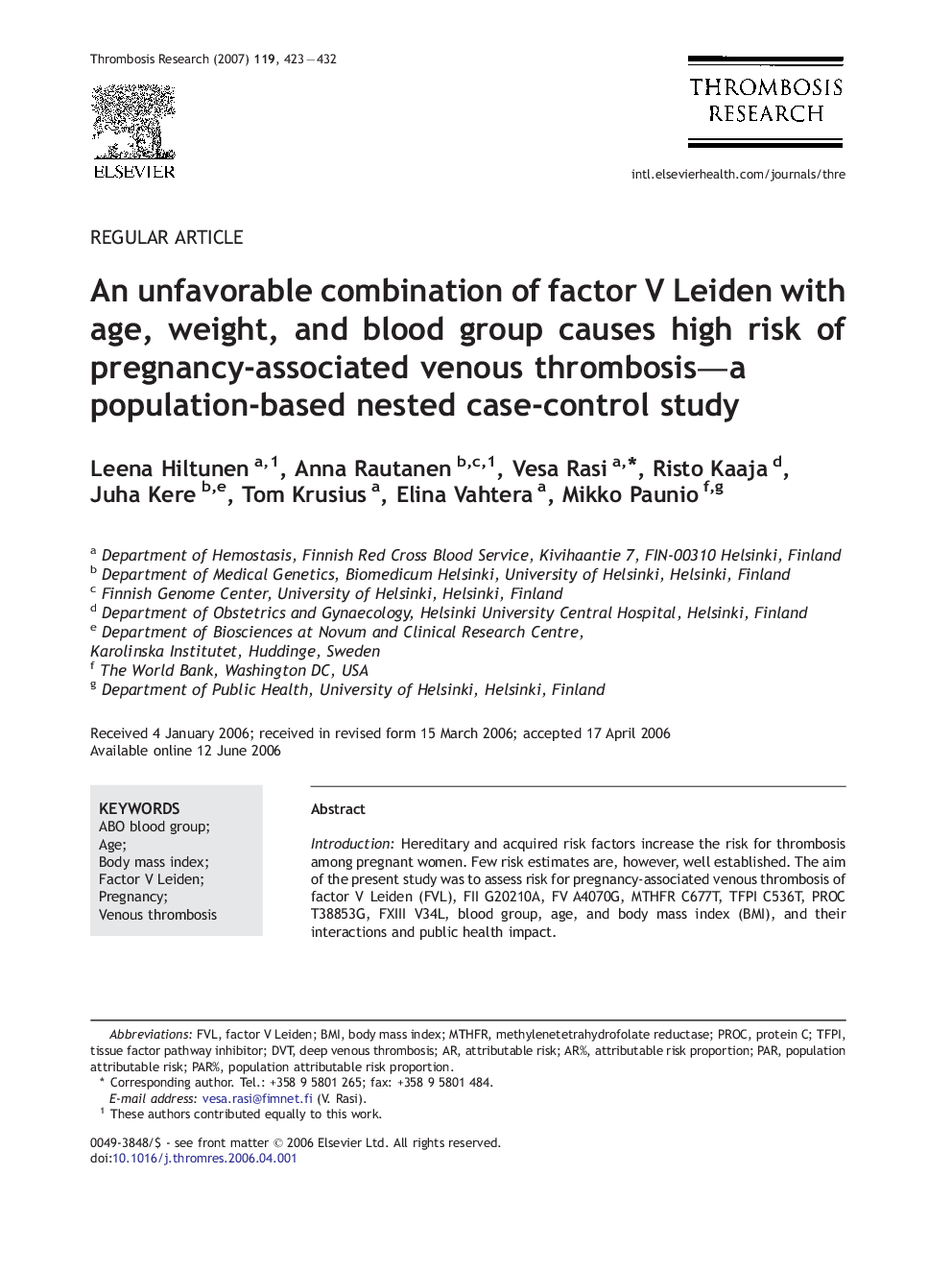| Article ID | Journal | Published Year | Pages | File Type |
|---|---|---|---|---|
| 3030083 | Thrombosis Research | 2007 | 10 Pages |
IntroductionHereditary and acquired risk factors increase the risk for thrombosis among pregnant women. Few risk estimates are, however, well established. The aim of the present study was to assess risk for pregnancy-associated venous thrombosis of factor V Leiden (FVL), FII G20210A, FV A4070G, MTHFR C677T, TFPI C536T, PROC T38853G, FXIII V34L, blood group, age, and body mass index (BMI), and their interactions and public health impact.Materials and methodsStudy design is a population-based nested case–control study of 100,000 consecutive pregnancies in Finland. Cases and controls were identified by combining national registers. Thirty four cases with objectively diagnosed venous thrombosis and 641 controls were studied.ResultsFVL (OR 11.6, 95% CI 3.6–33.6), age > 35 vs. < 25 (OR 6.3, 95% CI 1.7–23.1), and BMI > 30 vs. < 25 (OR 5.6, 95% CI 2.3–13.9) were associated with thrombosis. Overall absolute risk of a FVL carrier was 1 in 314. FVL interacted with age, BMI, and blood group. Population attributable risk proportion was 19% for FVL, 23% for age > 35, 33% for BMI > 25, and 35% for non-O blood group. Unexpectedly, the prevalence of FVL increased with age in controls.ConclusionsFVL appeared as a strong risk factor for pregnancy-associated venous thrombosis. Especially in elderly overweight mothers, FVL may cause a substantial thrombosis risk. Further studies are needed to confirm the increased prevalence of FVL in elderly mothers with normal pregnancies.
